Retinal Vein Occlusion
What is a Retinal Vein Occlusion?
The retina at the back of our eye has a rich network of blood vessels. Arteries bring fresh oxygenated blood into the eye, and veins return this blood back to the heart.
A Retinal Vein Occlusion is a blockage of a vein in the retinal circulation that causes the vein to leak blood and excess fluid into the retina. This retinal swelling and haemorrhage then leads to loss of vision.
The retinal veins stretch out across the retina like the branches of a tree, starting with one central retinal vein and dividing out into smaller branches. The exact location of the blockage will determine how much of the retina is damaged:
- Central Retinal Vein Occlusion (CRVO) - The blockage here is in the central retinal vein or main trunk of the "tree". The fluid leakage and haemorrhage can affect the entire retina, with a severe impact on vision and high risk of complications.
- Branch Retinal Vein Occlusion (BRVO) - The blockage here is in one of the smaller branches, and therefore only part of the retina is affected.
Who Is At Risk Of Retinal Vein Occlusion?
Retinal vein occlusions are more common in patients over 60 and the main risk factors for vascular disease are:
- High blood pressure
- High cholesterol
- Diabetes
- Smoking
- Blood clotting disorders
Symptoms of Retinal Vein Occlusion
The main symptom of Retinal Vein Occlusion is decreased vision.
Vision loss occurs quickly, often overnight, and nearly always affects only one eye. There is no pain and the eye is not red.
The vision loss can be severe, especially if the centre of the retina (macula) is affected. Alternatively if the vein occlusion is only in a small branch vein at the outer edge of the retina then the vision loss may be hardly noticeable.
How is Retinal Vein Occlusion Diagnosed?
Your ophthalmologist will perform a thorough eye examination including:
- Testing your visual acuity
- Dilating the pupil with eyedrops to examine the retina properly.
- An OCT scan will be performed to look for swelling in the retina (macular oedema).
- Fluorescein angiography is needed in some cases to enable accurate diagnosis. This involves the intravenous injection of a small quantity of a fluorescent dye, followed by a series of photographs of the retina.
- Blood tests may also be ordered to determine the underlying cause of the occlusion.
How is Retinal Vein Occlusion Treated?
The treatment recommended will depend on the severity of the Retinal Vein Occlusion and the effect on vision.
Mild cases of retinal vein occlusion may require no treatment, just monitoring. You may be referred back to your general medical practitioner for advice regarding diet or lifestyle modification, or treatment of high blood pressure, cholesterol, diabetes etc.
More severe cases in which vision is reduced usually require treatment, such as:
- Intravitreal anti-VEGF injections to reduce retinal swelling and macular oedema
- Steroid injection
- Retinal laser treatment
Successful treatment of retinal vein occlusion may take months or even years in severe cases.
What If Retinal Vein Occlusion Is Untreated?
In some cases, a retinal vein occlusion can lead to other complications in the eye such as:
- High pressure and glaucoma
- Vitreous haemorrhage
- Retinal detachment
- Permanent vision loss
It is therefore important to follow the advice of your treating doctor for the best possible outcome.



